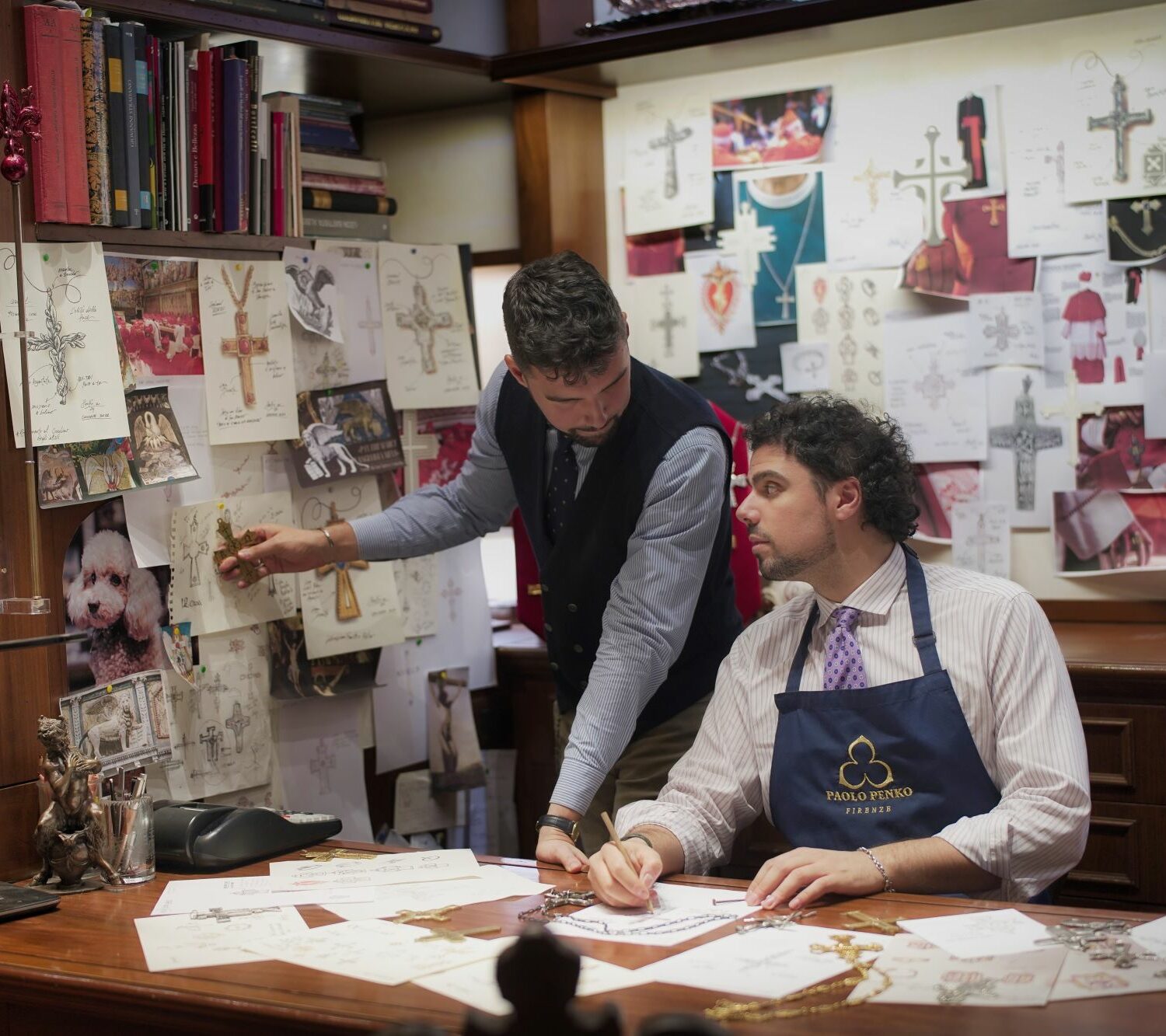In a city like Florence, an art capital of the world that has seen countless artistic talents emerge in its two millennia of history, it is not easy for a creative person to emerge, much less a craftsman; fortunately, it happens from time to time.
There are very few talents who embody the right balance between artist and entrepreneur enough to earn the consideration of experts, connoisseurs and scholars. One of these is Paolo Penko, a master goldsmith from Florence who from the beginning of his career has managed to weave his personal story as artist and craftsman into the boundless historical and cultural fabric of his beloved city. While the rest of the world was chasing an increasingly automated future (and as a natural consequence, less and less craftsmanship), Maestro Penko, with his approach some times against the tide, others bold and disruptive, has distinguished himself over the past forty years as one of Florence’s most influential artisans, who is now beginning to make a name for himself on the international stage as well.
In 1985 Paolo Penko took over the reins of his father’s numismatics store and together with his wife Beatrice converted it into a goldsmith’s workshop, giving it an innovative feel for the time, the first of many forward-looking choices that would mark their careers. In those years, being a craftsman did not have the same appeal at all as it does today, and it was in fact customary for the craft workshop to be located far from the public eye, often in the backroom if not even relocated to another part of town. Paolo and Beatrice were the first in the historic center of Florence to decide to put the workbench in full view of its customers, thus revealing the ancient techniques of the local goldsmithing tradition, which they practiced daily to make their creations.
Right from the start, Paolo identified the Florentine art-historical tradition as his greatest muse, and in the decades that followed he made a name for himself for his many tributes to the history of Florence: creations that even include faithful reproductions of the Medici family’s symbols of power (the originals of which have been lost for centuries now), such as the grand ducal crown of Cosimo I de’ Medici or the diamond known as “the Florentine,” which in the 17th century was mounted as a jewel on commission from the Medici themselves. In short, if one had to identify the most important and prestigious Florentine goldsmith of our time, one could name Master Paolo Penko without a shadow of a doubt.
In addition to this, Paolo and Beatrice’s most important achievement is certainly the fact that they have managed to pass on their same passion for goldsmithing to their children, Alessandro and Riccardo, who have been following in their footsteps for a few years now. It is thanks to this that in 2024 Bottega Orafa Paolo Penko celebrated one of its greatest successes with the release of the film Conclave, for which it made more than five hundred pieces of jewelry, including cardinal crosses, rings, and cufflinks, thus (literally) projecting the Penko family’s artistic creations onto big screens around the world.
Oscar-winner Edward Berger’s most recent film, Conclave, has achieved considerable critical acclaim not only for its cinematic content, but also for its meticulous attention to visual details, including the jewelry specially created by the Penko family. Riccardo Penko comments, “In the world of film, every detail contributes to creating the magic that transports the viewer to another reality… Each piece of jewelry [we made] was designed to reflect the role and personality of characters, helping to delineate their essence through the art of goldsmithing. The idea behind our work was to use jewelry not only as accessories, but as real narrative tools, capable of telling the story and character of each protagonist.”
Despite the considerable scope of the project, Paolo, Beatrice Alessandro and Riccardo wanted to respect the strictly artisanal canons that have distinguished their creations for decades now; each piece was made in-house, in all its stages of manufacture: from the design to the multiple and particular finishes, designed specifically for each object. This is perhaps the thing that strikes me more than any other: the consistency and determination that, despite market trends that row against it, drive Paolo Penko and his family to carry forward-and up! – the flashlight of artistic craftsmanship, thus tacitly but always concretely defending its worthiness in this digital age. It is a message that Paolo and Beatrice sent back in 1985, when he made the choice not to hide his workbench in the darkness of the backroom; it is a message that today, forty years later, thanks to his children, he is able to project on the big screen of hundreds of movie theaters around the world through the film Conclave.
The article Paul Penko: Conclave’s goldsmith comes from TheNewyorker.

